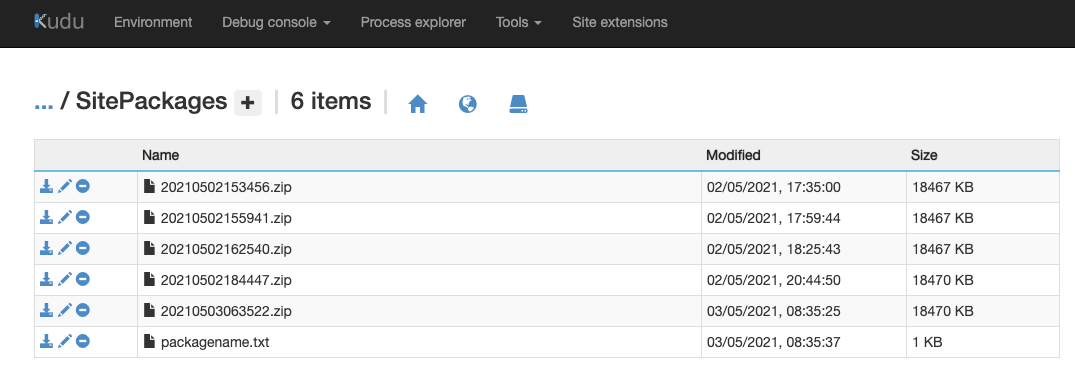Deploy your Azure Functions as a package from GitHub Actions
This post is over a year old, some of this information may be out of date.
For Squarl, I started to implement a couple of improvements for the back-end running on Azure Functions. I created these functions with TypeScript. In the past, I used webpack and later Azure Funcpack to bundle my functions to one file per function. That way, the host does not have to do all those read actions for retrieving the dependencies.
As I wanted to do the same thing, I read using Azure Funcpack is not supported/maintained anymore. Instead, you should use the run from package functionality.
What is the run from package option?
Instead of bundling, you install your dependencies, build your solution, and compress the directory as a ZIP file.
No significant changes, but now comes the cool part. The ZIP package gets used by the Azure Functions to run the function’s logic. Instead of pushing your files to the wwwroot directory, the app service loads the ZIP package as a virtual directory.
This option improves the load times, deployment times, and more.
If you want to use this functionality, you will have to set the WEBSITE_RUN_FROM_PACKAGE setting on your function app.
The value for this can refer to where the function app can find the ZIP package, or it can just be 1. This option is the recommended approach when running apps on Windows.
When using 1 as the value, the function app will run the data from a local package. The ZIP package needs to be deployed to d:\home\data\SitePackages as this improves the cold-start.
How do you use it on GitHub Actions?
The steps which you need to perform to deploy your code to the functions app are the following:
- Check out your code
- Specify the Node.js version to use
- Install your dependencies
- Build your project
- Create the ZIP
- Perform the deployment with the
webapps-deployaction
My GitHub Actions workflow looks as follows:
deploy_az: runs-on: windows-latest name: "Deploy back-end" if: ${{ !contains(github.event.head_commit.message, '#frontend') }}
steps: - uses: actions/checkout@v2 - uses: actions/setup-node@v1 with: node-version: '12' registry-url: https://registry.npmjs.org/
- name: "Install and build" run: | npm ci npm run build npm prune --production
# You can also make use of a ZIP GitHub Action - name: "Create ZIP" run: | Get-ChildItem $pwd | Compress-Archive -Destination .\backend.zip shell: pwsh
- name: 'Deploy the ZIP to the app' uses: azure/webapps-deploy@v2 with: app-name: ${{ env.AZURE_FUNCTIONAPP_NAME }} publish-profile: ${{ secrets.AZURE_FUNCTIONAPP_PUBLISH_PROFILE_DEV }} package: ./backend.zipOnce this workflow ran. Your function app will now run from the package you deployed. You can verify this if you take a look in the wwwroot directory. This directory should now contain the files from the package. Be aware; this directory is now read-only.

Related articles
Which service? Netlify vs Vercel vs Azure Static Web App
Manual GitHub workflow triggers for Azure Static Web Site
Running the CollabDays Benelux event on Azure Static Web App
Report issues or make changes on GitHub
Found a typo or issue in this article? Visit the GitHub repository to make changes or submit a bug report.
Comments
Let's build together
Manage content in VS Code
Present from VS Code
